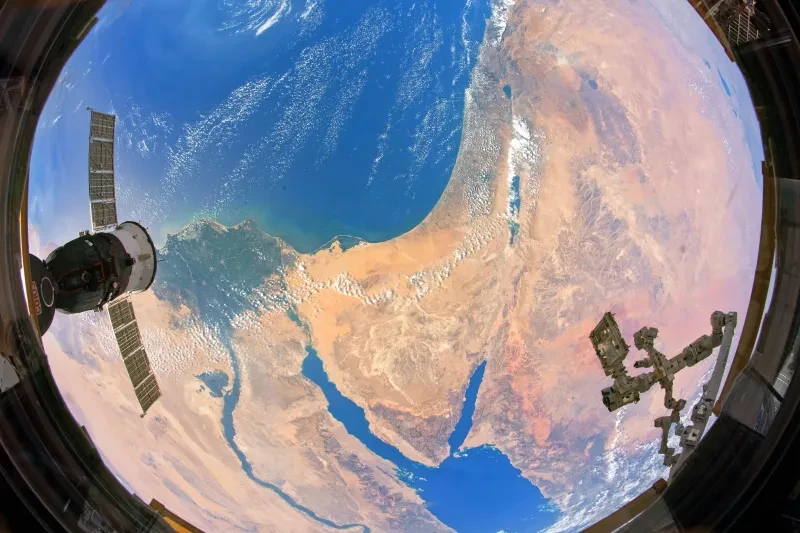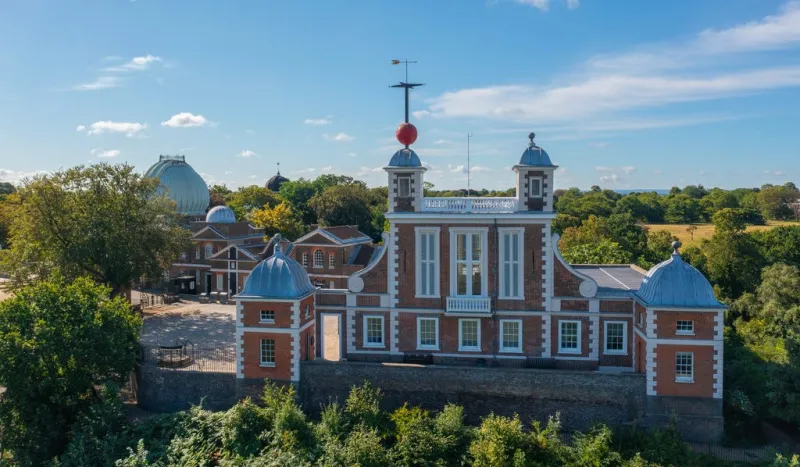
Find out what to see in the September night sky, from naked-eye objects around Cassiopeia, to a partial lunar eclipse, and more.
By Jessica B, Work Experience Student
Top 3 things to see in the night sky in September 2024:
- Throughout the month – find the Perseus Double Cluster, the Andromeda Galaxy, and the Funnel Cloud Nebula
- 18 September – catch a partial lunar eclipse
- 22 September – see the Moon approach the Pleiades during the autumn equinox
Details given are for London and may vary for other parts of the UK.
Look Up! podcast
Subscribe and listen to the Royal Observatory Greenwich's podcast Look Up! where Royal Observatory Greenwich astronomers Imo and Catherine talk through some of this month’s must-see cosmic objects. Also discussed are this month’s cosmic news stories – the blue moon seen recently, and a new theory about the origin of the “Wow!” signal detected in 1977.
From Cassiopeia to the cosmos
For the best opportunity to stargaze and observe the sky, make sure to look on 2 September, when there is a new Moon. While you won't be able to observe the features of the Moon, you'll have slightly less light pollution in the sky.
If you look North, you'll see the constellation Cassiopeia, which is a distinctive ‘W’ shape. South of Cassiopeia, you'll be able to see the Perseus Double Cluster without a telescope, although it will just look like a hazy patch. This consists of the open star clusters NGC 869 and NGC 884, which both lie in the constellation of Perseus. If you follow the right-hand point of the ‘W’, it will guide you to Messier 31, a spiral galaxy known as the Andromeda Galaxy. This is the nearest large galaxy to our galaxy the Milky Way, and one day in the future will actually collide with us!
If you’re able to get to an extremely dark area during the new Moon, you might even be able to see a milky band of light in the sky, which is our very own Milky Way. There's even a chance of viewing a dark nebula in the Milky Way band known as the Funnel Nebula, which is a dark cloud of cosmic dust which blocks any light.
A partial lunar eclipse
If the sky is clear on 18 September, a partial lunar eclipse will occur during the night, which is when the Moon passes through a section of the Earth’s shadow.
The partial lunar eclipse will begin at 3.14am, when the Moon begins to enter Earth’s umbra (the darkest part of Earth's shadow) and will end at 4.16am when the Moon is outside the umbra. During its maximum at 3.45am, 3.5% of the Moon’s disk will be in shadow.
This eclipse should be visible across Europe, the Americas, Western Asia and Antarctica, so check the timings for your location and set your alarms. If you’re from the UK, don't miss this phenomenon as the next lunar eclipse visible in the UK won't be until 14 March 2025.
Autumn arrives with the Moon near the Pleiades
22 September is going to be an exciting day! Firstly, it's the autumn equinox, where both the day and night will be almost exactly 12 hours. This happens as the Sun’s journey through the zodiac constellations makes it pass across the celestial equator, giving the Southern Hemisphere more sunlight. It marks the beginning of autumn in the Northern Hemisphere and spring in the Southern Hemisphere- so if you're up north, get excited for longer nights of stargazing!
On the same night, you will be able to see a close approach between the Moon in a waning gibbous phase and M45, an open star cluster called the Pleiades, also known as the Seven Sisters. This asterism received its name from Greek mythology, where the myth says Zeus wanted to protect his 7 daughters from Orion, so he transformed them into stars.
The Pleiades open cluster consists of B-type stars which formed in the last 100 million years. Surrounding the bright stars is a reflection nebula which, although once thought to be leftover remains from the stars’ formation, is most likely unrelated dust clouds.
You will also be able to see the constellation Orion, which contains the asterism ‘Orion’s Belt’ made out of the stars Alnitak, Alnilam and Mantika. If you follow the line you get from connecting these stars, it will guide you to M45.
The planets in September
Throughout the month many different planets will be visible.
As Mercury can only be observed in twilight, it is very hard to see without a telescope. However, if you look East on 6 September, it will be at its highest altitude in the morning sky, so you will have the best chance of viewing it then.
On 8 September, Saturn will be at opposition in the sky, meaning it is directly in line with the Sun and will have greater illumination than usual. It will be bright and easily visible to the naked eye throughout the month, even in a light-polluted city. If you want to see Saturn's rings however, you're going to need a telescope, and due to the current angle of the planet compared to Earth they're going to appear particularly thin! If you’re in the US or Australia keep an eye out because on the 17th there is a lunar occultation- for a fraction of the night the Moon will completely cover Saturn.
On 21 September, Neptune will also be at opposition in the sky. However, due to its distance you will most likely still need a telescope to view it - for the best view try to look around midnight when it is at its maximum point in the sky.
Luckily, every night in the South the largest planet, Jupiter, will be visible to the naked eye. With a telescope on a clear night you might be able to spot Jupiter’s moons!
What to see in the Southern Hemisphere
For those in the Southern Hemisphere, you're in luck because the globular cluster 47 Tuc is in a very convenient spot to be viewed with the naked eye if the sky is clear throughout the month. This globular cluster is the second brightest in the whole sky, so I would recommend getting a pair of binoculars or a telescope for the best view.
The Moon's phases in September 2024
New Moon: 3 September (02:56)
First Quarter: 11 September (07:06)
Full Moon: 18 September (03:35)
Last Quarter: 24 September (19:50)
Stargazing Tips
- When looking at faint objects such as stars, nebulae, the Milky Way and other galaxies it is important to allow your eyes to adapt to the dark so that you can achieve better night vision.
- Allow 15 minutes for your eyes to become sensitive in the dark and remember not to look at your mobile phone or any other bright device when stargazing.
If you're using a star app on your phone, switch on the red night vision mode.
Everything in this month's blog has been created by young people: it was written by Jessica, a Royal Observatory work experience student, with accompanying images from the Young Astronomy Photographer of the Year Competition.
You may also be interested in
Header image: Andromeda Galaxy: The Neighbour by Yang Hanwen and Zhou Zezhen, shortlisted in Astronomy Photographer of the Year 2022 Young competition













